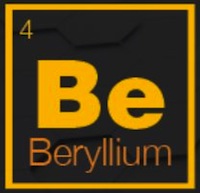 By Colin Dixon, Chair of Technical Steering Committee, OpenDaylight
By Colin Dixon, Chair of Technical Steering Committee, OpenDaylight
I’m incredibly proud to be able to announce the fourth major release of OpenDaylight: Beryllium. Beryllium is the culmination of the work of more than 600 developers from organizations and countries around the world coming together to define the future of networking. I continue to be impressed (but not surprised) by the passion, ambition, and raw coding power of the OpenDaylight community.
The months since the Lithium release have been significant ones for OpenDaylight. They’ve marked a shift in the interest in OpenDaylight from early adopters, proofs of concept, and kicking the tires to major production deployments, significant end-user adoption, and the development of a vibrant user community. People are actively using OpenDaylight to provide automated service delivery for customers, optimize the network resource utilization of their applications, scale and automate their cloud and NFV deployments, deliver regional networks for smart cities and IoT, as well as simply providing better visibility and control of the networks they already have.
We’ve gone from AT&T announcing that they were using OpenDaylight as their Global Controller to seeing our Advisory Group take flight as a venue for network architects and operators to come together and share their experiences with OpenDaylight, as well as give feedback to the developer community about what features they need most. Perhaps most excitingly, we’ve seen Asia in general and China specifically emerge as major hubs for OpenDaylight.
Our latest user survey has provided data to back up what we’ve known for some time: OpenDaylight transcends individual use cases and geographic regions. It’s not just for data centers, just for service providers, just for enterprises, just for academics, just for North America, or just for Europe. Our users span the developed world and there are people using it in data centers, to control service provider networks as well as to distribute data for universities and academics.
Beryllium has been about living up to these realities with a significant focus on production-ready features including enhanced scale, stability, reliability and performance, but also delivering new functionality and tooling targeting our diversifying community.
Probably the biggest OpenDaylight-wide focus in OpenDaylight was around many of our applications and plugins adopting the clustering technology that we developed in Helium and Lithium as well as enhanced in Beryllium. The end result is that many of our key protocol plugins (including OpenFlow, OVSDB, and NETCONF) are now fully clustered providing highly-available service so that even if one node in an OpenDaylight cluster goes down, another node will take over for it and service will continue uninterrupted.
It’s not just the plugins that picked this up though. Applications ranging from network virtualization to policy-driven networking have completed the stack so that users can provide complete solutions in a highly-available, production-ready manner.
While network virtualization (and in particular Neutron support for OpenStack) are far from the only use case for OpenDaylight, it remains a key focus and in Beryllium we’ve enhanced OpenDaylight’s capabilities so that it can provide support not only for basic ML2 network virtualization, but do so in a highly-available way and provide advanced features including distributed L3 routing, VPNaaS, LBaaS, security groups and support for hardware Virtual Tunnel Endpoints (VTEPs) using the OVSDB protocol.
We’ve also seen enhanced tooling for developers and users alike. While not officially part of the Beryllium release, AT&T has contributed the YangIDE project which allows for easier and more powerful authoring of YANG models. The Time Series Data Repository (TSDR) and Centinel projects provide ways to extract real-time data from OpenDaylight to feed them into big data analytics tools. The NetIDE project provides ways to run SDN applications from other controllers (including Pyretic, Floodlight and Ryu) on OpenDaylight. The Messaging4Transport project provides AMQP (message bus) bindings for the core of OpenDaylight allowing for applications and tools to more easily tab into OpenDaylight events. All of these are directly targeting developers and network operators who are looking to put OpenDaylight into production and deal with the broader software and IT ecosystem around such deployments.
If you want to experience what Beryllium has to offer, you can download it and the check out our ONS Webinar—OpenDaylight Beryllium: Technical Deep Dive on March 3, 2016 at 11:00 am PT.


